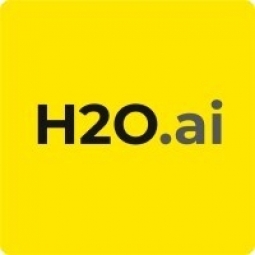产品
- QualityCare ConnectSM
- H2O Driverless AI
技术栈
- Natural Language Processing (NLP)
- Machine Learning
- Big Data
影响指标
- Customer Satisfaction
- Productivity Improvements
技术
- 分析与建模 - 机器学习
- 分析与建模 - 自然语言处理 (NLP)
适用行业
- 医疗保健和医院
适用功能
- 人力资源
用例
- 对话机器人
- 临床图像分析
服务
- 数据科学服务
关于客户
ArmadaHealth is a health data science and services company founded to help people access the right physician or expert for them. Their unique solution, QualityCare ConnectSM, combines big data and expert clinical insights which they aim straight at the root cause of healthcare access problems. ArmadaHealth does this by applying sentiment analysis on customer reviews and advanced analysis of experts’ wisdom to understand the consumers, objectively matching to their needs and preferences, preparing them, and delivering timely access to a choice of the most appropriate physicians for their condition.
挑战
Finding the right specialist is the first step to receiving the right care. However, consumers are not equipped to navigate the complex and confusing healthcare system. It can be challenging for patients to discover which specialist they should approach for different health situations and, even with a referral from a primary physician, it can still be a long process until they find the right specialist who can accurately treat them while also providing a satisfactory patient experience. Finding the right match between patient and doctor can solve major problems and save lives.
解决方案
H2O Driverless AI is an essential part of reaching Armada Health’s goal of delivering accurate patient-expert matches. By using our automatic machine learning platform, the company is able to build and train a Natural Language Processing (NLP) model to identify the sentiment (positive, negative, neutral) in each customer review. The company looks at three main aspects in each review: treatment outcome, communication, and attitude. These three aspects are critical to finding the best expert that matches customer preferences. Driverless AI is also key to understanding characteristics derived from the data and its NLP features and interpretability features make it easier to analyze sentiment.
运营影响
数量效益

Case Study missing?
Start adding your own!
Register with your work email and create a new case study profile for your business.
相关案例.

Case Study
Hospital Inventory Management
The hospital supply chain team is responsible for ensuring that the right medical supplies are readily available to clinicians when and where needed, and to do so in the most efficient manner possible. However, many of the systems and processes in use at the cancer center for supply chain management were not best suited to support these goals. Barcoding technology, a commonly used method for inventory management of medical supplies, is labor intensive, time consuming, does not provide real-time visibility into inventory levels and can be prone to error. Consequently, the lack of accurate and real-time visibility into inventory levels across multiple supply rooms in multiple hospital facilities creates additional inefficiency in the system causing over-ordering, hoarding, and wasted supplies. Other sources of waste and cost were also identified as candidates for improvement. Existing systems and processes did not provide adequate security for high-cost inventory within the hospital, which was another driver of cost. A lack of visibility into expiration dates for supplies resulted in supplies being wasted due to past expiry dates. Storage of supplies was also a key consideration given the location of the cancer center’s facilities in a dense urban setting, where space is always at a premium. In order to address the challenges outlined above, the hospital sought a solution that would provide real-time inventory information with high levels of accuracy, reduce the level of manual effort required and enable data driven decision making to ensure that the right supplies were readily available to clinicians in the right location at the right time.

Case Study
Gas Pipeline Monitoring System for Hospitals
This system integrator focuses on providing centralized gas pipeline monitoring systems for hospitals. The service they provide makes it possible for hospitals to reduce both maintenance and labor costs. Since hospitals may not have an existing network suitable for this type of system, GPRS communication provides an easy and ready-to-use solution for remote, distributed monitoring systems System Requirements - GPRS communication - Seamless connection with SCADA software - Simple, front-end control capability - Expandable I/O channels - Combine AI, DI, and DO channels

Case Study
Driving Digital Transformations for Vitro Diagnostic Medical Devices
Diagnostic devices play a vital role in helping to improve healthcare delivery. In fact, an estimated 60 percent of the world’s medical decisions are made with support from in vitrodiagnostics (IVD) solutions, such as those provided by Roche Diagnostics, an industry leader. As the demand for medical diagnostic services grows rapidly in hospitals and clinics across China, so does the market for IVD solutions. In addition, the typically high cost of these diagnostic devices means that comprehensive post-sales services are needed. Wanteed to improve three portions of thr IVD:1. Remotely monitor and manage IVD devices as fixed assets.2. Optimizing device availability with predictive maintenance.3. Recommending the best IVD solution for a customer’s needs.

Case Study
HaemoCloud Global Blood Management System
1) Deliver a connected digital product system to protect and increase the differentiated value of Haemonetics blood and plasma solutions. 2) Improve patient outcomes by increasing the efficiency of blood supply flows. 3) Navigate and satisfy a complex web of global regulatory compliance requirements. 4) Reduce costly and labor-intensive maintenance procedures.

Case Study
Cloud-based healthcare solution for Royal Philips
Royal Philips wanted to launch its cloud-based healthcare solution HealthSuite Digital Platform in China to deliver services to help cope with challenges related to urbanization and population growth. Philips wanted to achieve this goal by combining mobile, cloud computing and big data technologies. To bring this platform and product to market, Philips required cloud computing and local technical service capabilities in China, in addition to a flexible IT infrastructure that could handle user requests.








